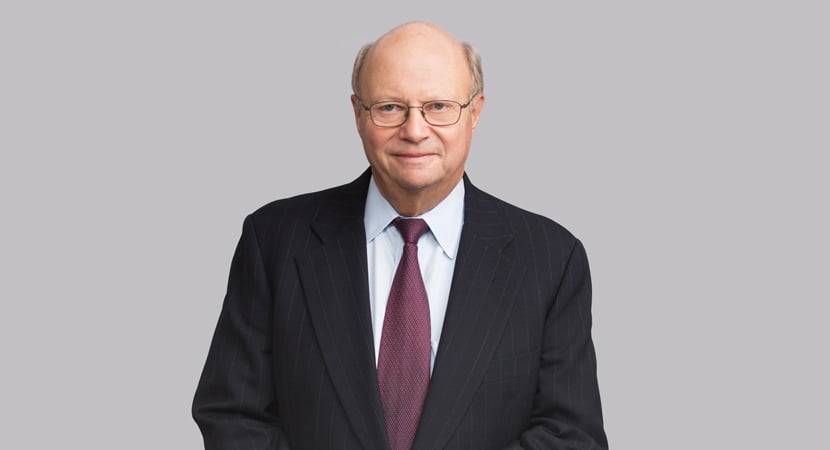District court denies motion to dismiss claim that defendants’ work infringed plaintiff’s copyright in Dr. Seuss book Oh, the Places You’ll Go, finding that, although defendants’ work is highly transformative “mash up” of Dr. Seuss books with elements of “Star Trek” canon, at motion to dismiss stage plaintiff’s allegations of market harm must be taken as true, resulting in “near-perfect balancing” of fair use factors and precluding court from finding for defendants as matter of law.
Dr. Seuss Enterprises, L.P., the assignee and owner of various copyright registrations for and trademarks in the works of Theodor S. Geisel, also known as “Dr. Seuss,” sued ComicMix LLC, Glenn Hauman, David Jerrold Friedman, JDavid Gerrold and TY Templeton, claiming that defendants’ work Oh, the Places You’ll Boldly Go! (Boldly) infringes on Oh, the Places You’ll Go! (Go!) and other Dr. Seuss books.
Defendants initiated a Kickstarter campaign to fund the distribution and printing of Boldly, which combines elements of Go! and various Dr. Seuss works with “certain characters, imagery, and other elements” from the “Star Trek” science fiction franchise. According to plaintiff, Boldly misappropriates key elements of Go! and four other Dr. Seuss books. Upon learning about the Kickstarter campaign, plaintiff sent Kickstarter a takedown notice, which resulted in Kickstarter suspending defendants’ campaign. Ultimately plaintiff filed suit alleging copyright and trademark infringement and a violation of unfair competition laws. Defendants moved to dismiss the case.
Defendants argued that plaintiff’s copyright infringement claim should be dismissed because Boldly is protected by the fair use doctrine. Plaintiff countered that any decision on fair use at the pleading stage was inappropriate because of significant outstanding material facts. Recognizing that fair use is a mixed question of law and fact, the district court nevertheless disagreed with plaintiff, finding that the only genuine issue of fact that plaintiff pointed to was “the issue of whether the Defendants’ use … will appreciably harm the value of [plaintiff’s] Works ….” Therefore, the district court concluded, as long as it accepted plaintiff’s allegations of market harm as true for purposes of the motion, it was appropriate to conduct a fair use analysis at the motion to dismiss stage.
The district court considered, in turn, the four fair use factors: (1) the purpose and character of the use, including whether the use was commercial in nature and whether the use was transformative; (2) the nature of the copyrighted work; (3) the amount and substantiality of the portion of the work used; and (4) the effect of the use on the potential market for the work.
The court found that the first factor, the “purpose and character of the use,” weighed in defendants’ favor. This factor asks “whether and to what extent the new work is ‘transformative.’” Defendants initially argued that their work constituted a “parody,” a type of work that many courts have found to qualify for fair use protection. The district court disagreed, stating that defendants’ work is more appropriately termed “a literal and pictorial mash-up”—while such a work can constitute a parody when they juxtapose the underlying work in a way that creates “comic effect or ridicule,” the court found no such juxtaposition here. Nevertheless, the district court found that while not a parody, Boldly was “no doubt transformative,” because it combined the two disparate worlds of Dr. Seuss and “Star Trek” into a completely new work.
With regard to the second factor, the nature of the copyrighted work, the court noted that “this … factor typically has not been terribly significant in the overall fair use balancing.” The court also noted that, in assessing this factor, a court must also consider the extent to which a work has been published, because published works are more likely to qualify for fair use (as the first appearance of the author’s expression had already occurred). Accordingly, the court concluded that this factor weighs in plaintiff’s favor, but only slightly so.
Regarding the third factor, the amount and substantiality of the portion used, the district court concluded it did not weigh against defendants because, even though Boldly copied many aspects of Go!’s and other Dr. Seuss illustrations, it did not copy them in their entirety, and did not copy more than necessary to accomplish its transformative purpose.
Finally, as to the fourth factor, plaintiff alleged market harm by maintaining that it is not uncommon for it to license works, including in collaborations with other rights holders. The district court pointed out it is unlikely that Boldly would severely impact the market for Dr. Seuss works because Boldly and Go! serve a different market function, with Boldly catering to consumers who possess a strong knowledge of both Dr. Seuss and the “Star Trek” franchise. However, given that plaintiff’s allegations are taken as true at the motion to dismiss stage and there is a lack of record evidence to the contrary, the district court held that the fourth factor weighed in plaintiff’s favor.
In weighing the four factors, the district court stated that “[t]his case presents an important question regarding the emerging ‘mash-up’ culture where artists combine two independent works in a new and unique way.” The court recognized that “[a]pplying the fair use factors in the manner Plaintiff outlines would almost always preclude a finding of fair use under these circumstances,” but that “if fair use was not viable in a case such as this, an entire body of highly creative work would be effectively foreclosed.” And the district court found that Boldly is “a highly transformative work that takes no more than necessary to accomplish its transformative purpose and will not impinge on the original market for Plaintiff’s underlying work.”
Despite all of this, the court ultimately found that, largely because it had to accept plaintiff’s allegations concerning the fourth factor as true for purposes of a motion to dismiss, there was a “near-perfect balancing” of the fair use factors, such that the court could not find fair use as a matter of law. Accordingly, given the procedural posture of the motion, the district court refused to dismiss plaintiff’s copyright infringement claim.
The district court did, however, dismiss plaintiff’s remaining claims for trademark infringement and unfair competition. Plaintiff alleged trademark rights in (1) the title Oh, the Places You’ll Go!; (2) the stylized font used in Dr. Seuss’s books; and (3) the unique illustration style of the characters and backgrounds of Dr. Seuss’s books. Defendants argued that their use of the alleged trademarks was shielded by the First Amendment and the nominative fair use doctrine.
In determining whether plaintiff’s claims survive First Amendment scrutiny, the district court applied the Second Circuit’s Rogers v. Grimaldi test, which requires courts to “construe the Lanham Act to apply to artistic works only where the public interest in avoiding consumer confusion outweighs the public interest in free expression.” The district court concluded that defendants’ use of plaintiff’s alleged trademarks are relevant to Boldly’s artistic purpose, and that Boldly did not explicitly mislead as to its source or content. Boldly’s cover imagery and title invoke Star Trek characters and images, and the work explicitly states that it is not authored by Dr. Seuss or associated with plaintiff or CBS studios.
Plaintiff argued that Rogers explicitly incorporates an exception for “misleading titles that are confusingly similar to other titles”—thus, the court did not dismiss plaintiff’s trademark infringement claim predicated on Go!’s title pursuant to Rogers, but rather dismissed that claim pursuant to the doctrine of nominative fair use. Under that doctrine, use of a trademark is permissible when it is used only to describe the plaintiff’s product, with the court asking “whether (1) the product was ‘readily identifiable’ without use of the mark; (2) defendant used more of the mark than necessary; or (3) defendant falsely suggested he was sponsored or endorsed by the trademark holder.” Because defendants offered a reasoned application of each prong of the nominative fair use inquiry, and plaintiff did not address the substance of defendants’ arguments (other than to argue that nominative fair use should not be found, as a matter of law, on a motion to dismiss), the court granted defendants’ motion.
Finally, the district court further granted defendants’ motion to dismiss the unfair competition claim because if claims “relying on the exact same factual conduct” are validly dismissed under the Lanham Act, they should also be dismissed under California’s unfair competition law.
Summary prepared by Jonathan Neil Strauss and Ava Badiee
Dr. Seuss Enterprises, L.P., the assignee and owner of various copyright registrations for and trademarks in the works of Theodor S. Geisel, also known as “Dr. Seuss,” sued ComicMix LLC, Glenn Hauman, David Jerrold Friedman, JDavid Gerrold and TY Templeton, claiming that defendants’ work Oh, the Places You’ll Boldly Go! (Boldly) infringes on Oh, the Places You’ll Go! (Go!) and other Dr. Seuss books.
Defendants initiated a Kickstarter campaign to fund the distribution and printing of Boldly, which combines elements of Go! and various Dr. Seuss works with “certain characters, imagery, and other elements” from the “Star Trek” science fiction franchise. According to plaintiff, Boldly misappropriates key elements of Go! and four other Dr. Seuss books. Upon learning about the Kickstarter campaign, plaintiff sent Kickstarter a takedown notice, which resulted in Kickstarter suspending defendants’ campaign. Ultimately plaintiff filed suit alleging copyright and trademark infringement and a violation of unfair competition laws. Defendants moved to dismiss the case.
Defendants argued that plaintiff’s copyright infringement claim should be dismissed because Boldly is protected by the fair use doctrine. Plaintiff countered that any decision on fair use at the pleading stage was inappropriate because of significant outstanding material facts. Recognizing that fair use is a mixed question of law and fact, the district court nevertheless disagreed with plaintiff, finding that the only genuine issue of fact that plaintiff pointed to was “the issue of whether the Defendants’ use … will appreciably harm the value of [plaintiff’s] Works ….” Therefore, the district court concluded, as long as it accepted plaintiff’s allegations of market harm as true for purposes of the motion, it was appropriate to conduct a fair use analysis at the motion to dismiss stage.
The district court considered, in turn, the four fair use factors: (1) the purpose and character of the use, including whether the use was commercial in nature and whether the use was transformative; (2) the nature of the copyrighted work; (3) the amount and substantiality of the portion of the work used; and (4) the effect of the use on the potential market for the work.
The court found that the first factor, the “purpose and character of the use,” weighed in defendants’ favor. This factor asks “whether and to what extent the new work is ‘transformative.’” Defendants initially argued that their work constituted a “parody,” a type of work that many courts have found to qualify for fair use protection. The district court disagreed, stating that defendants’ work is more appropriately termed “a literal and pictorial mash-up”—while such a work can constitute a parody when they juxtapose the underlying work in a way that creates “comic effect or ridicule,” the court found no such juxtaposition here. Nevertheless, the district court found that while not a parody, Boldly was “no doubt transformative,” because it combined the two disparate worlds of Dr. Seuss and “Star Trek” into a completely new work.
With regard to the second factor, the nature of the copyrighted work, the court noted that “this … factor typically has not been terribly significant in the overall fair use balancing.” The court also noted that, in assessing this factor, a court must also consider the extent to which a work has been published, because published works are more likely to qualify for fair use (as the first appearance of the author’s expression had already occurred). Accordingly, the court concluded that this factor weighs in plaintiff’s favor, but only slightly so.
Regarding the third factor, the amount and substantiality of the portion used, the district court concluded it did not weigh against defendants because, even though Boldly copied many aspects of Go!’s and other Dr. Seuss illustrations, it did not copy them in their entirety, and did not copy more than necessary to accomplish its transformative purpose.
Finally, as to the fourth factor, plaintiff alleged market harm by maintaining that it is not uncommon for it to license works, including in collaborations with other rights holders. The district court pointed out it is unlikely that Boldly would severely impact the market for Dr. Seuss works because Boldly and Go! serve a different market function, with Boldly catering to consumers who possess a strong knowledge of both Dr. Seuss and the “Star Trek” franchise. However, given that plaintiff’s allegations are taken as true at the motion to dismiss stage and there is a lack of record evidence to the contrary, the district court held that the fourth factor weighed in plaintiff’s favor.
In weighing the four factors, the district court stated that “[t]his case presents an important question regarding the emerging ‘mash-up’ culture where artists combine two independent works in a new and unique way.” The court recognized that “[a]pplying the fair use factors in the manner Plaintiff outlines would almost always preclude a finding of fair use under these circumstances,” but that “if fair use was not viable in a case such as this, an entire body of highly creative work would be effectively foreclosed.” And the district court found that Boldly is “a highly transformative work that takes no more than necessary to accomplish its transformative purpose and will not impinge on the original market for Plaintiff’s underlying work.”
Despite all of this, the court ultimately found that, largely because it had to accept plaintiff’s allegations concerning the fourth factor as true for purposes of a motion to dismiss, there was a “near-perfect balancing” of the fair use factors, such that the court could not find fair use as a matter of law. Accordingly, given the procedural posture of the motion, the district court refused to dismiss plaintiff’s copyright infringement claim.
The district court did, however, dismiss plaintiff’s remaining claims for trademark infringement and unfair competition. Plaintiff alleged trademark rights in (1) the title Oh, the Places You’ll Go!; (2) the stylized font used in Dr. Seuss’s books; and (3) the unique illustration style of the characters and backgrounds of Dr. Seuss’s books. Defendants argued that their use of the alleged trademarks was shielded by the First Amendment and the nominative fair use doctrine.
In determining whether plaintiff’s claims survive First Amendment scrutiny, the district court applied the Second Circuit’s Rogers v. Grimaldi test, which requires courts to “construe the Lanham Act to apply to artistic works only where the public interest in avoiding consumer confusion outweighs the public interest in free expression.” The district court concluded that defendants’ use of plaintiff’s alleged trademarks are relevant to Boldly’s artistic purpose, and that Boldly did not explicitly mislead as to its source or content. Boldly’s cover imagery and title invoke Star Trek characters and images, and the work explicitly states that it is not authored by Dr. Seuss or associated with plaintiff or CBS studios.
Plaintiff argued that Rogers explicitly incorporates an exception for “misleading titles that are confusingly similar to other titles”—thus, the court did not dismiss plaintiff’s trademark infringement claim predicated on Go!’s title pursuant to Rogers, but rather dismissed that claim pursuant to the doctrine of nominative fair use. Under that doctrine, use of a trademark is permissible when it is used only to describe the plaintiff’s product, with the court asking “whether (1) the product was ‘readily identifiable’ without use of the mark; (2) defendant used more of the mark than necessary; or (3) defendant falsely suggested he was sponsored or endorsed by the trademark holder.” Because defendants offered a reasoned application of each prong of the nominative fair use inquiry, and plaintiff did not address the substance of defendants’ arguments (other than to argue that nominative fair use should not be found, as a matter of law, on a motion to dismiss), the court granted defendants’ motion.
Finally, the district court further granted defendants’ motion to dismiss the unfair competition claim because if claims “relying on the exact same factual conduct” are validly dismissed under the Lanham Act, they should also be dismissed under California’s unfair competition law.
Summary prepared by Jonathan Neil Strauss and Ava Badiee
-
 Associate
Associate
)







